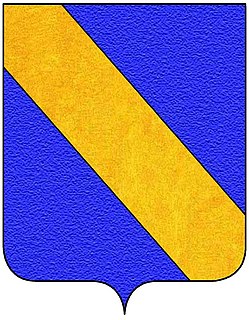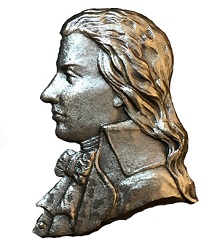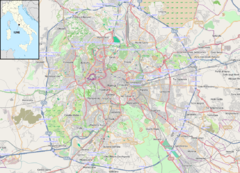Antonio Lotti was an Italian composer of the Baroque era.

Domenico di Michelino (1417–1491) was an Italian Renaissance painter who was born and died in Florence. His real name was Domenico di Francesco. The patronymic "di Michelino" was adopted in honor of his teacher, the cassone painter Michelino di Benedetto, by whom no works have been identified. Giorgio Vasari reports that Domenico was also a pupil of Fra Angelico, whose influence is reflected in many of Domenico's paintings along with that of Filippo Lippi and Pesellino.

The Accademia di Belle Arti di Venezia is a public tertiary academy of art in Venice, Italy.

Bernardino Genga (1620–1690) was a scholar of Classical medical texts, editing several works of Hippocrates. He also had a great interest in the preparation of anatomical specimens as well as the anatomy of ancient Greek and Roman sculpture. These interests led to his work at the French Academy in Rome, where he taught anatomy to artists.

Antonio Maria Salviati was a Florentine Roman Catholic cardinal.

Giovanni Battista Monteggia was an Italian surgeon. The Monteggia fracture is named after him.
The Acqui Award of History is an Italian prize. The prize was founded in 1968 for remembering the victims of the Acqui Military Division who died in Cefalonia fighting against the Nazis. The jury is composed of seven members: six full professors of history and a group of sixty (60) ordinary readers who have just one representative in the jury. The Acqui Award Prize is divided into three sections: history, popular history, and historical novels. A special prize entitled “Witness to the Times,” given to individual personalities known for their cultural contributions and who have distinguished themselves in describing historical events and contemporary society, may also be conferred. Beginning in 2003 special recognition for work in multimedia and iconography--”History through Images”—was instituted.

The hospital of San Giacomo in Augusta, also known as San Giacomo degli Incurabili was a historic hospital located in Rome.

San Giacomo in Augusta is a Baroque church in Rome, Italy. It was the church of the Hospital of San Giacomo degli Incurabili.

The Ospedale degli Incurabili or Complesso degli Incurabili is an ancient and prominent hospital complex located on Via Maria Longo in central Naples, Italy. Part of the complex, including the remarkable pharmacy, are now the Museo delle arti sanitarie of Naples.

Santa Maria delle Grazie Maggiore a Caponapoli or Santa Maria delle Grazie Maggiore is a church located in the historic center of Naples, Italy.

The Museo Storico Nazionale dell'Arte Sanitaria is located within the Ospedale di Santo Spirito in Sassia at 3, Lungotevere in Sassia in Rome (Italy).
The Giornale degli economisti e Annali di economia, established in Padua in 1875, is an Italian academic journal of economics. It publishes research articles in English and Italian. The owner of the publication is Università Commerciale Luigi Bocconi and it is published by Egea, the University's publishing house.

The Capizucchi family was a noble Roman family. Considered one among the oldest families in Rome, it was deeply rooted in the Roman nobility because of the gallantry of many members. The family died out in the 17th century, and its name came to an end in 1813. The Capizucchis had their homes in Campitelli rione, at the foot of Capitoline Hill, and there also lay their palace. This still exists and is located between two squares, Piazza Campitelli and the one that took its name from the family, Piazza Capizucchi.
Fernando Aiuti was an Italian immunologist and politician. He was the founder and first President of ANLAIDS Association.

Luigi Capotorti was an Italian composer of both sacred and secular music. He was the maestro di cappella of several Neapolitan churches; the composer of ten operas, five of which premiered at the Teatro San Carlo in Naples; and a teacher of composition and singing whose students included Stefano Pavesi and Saverio Mercadante. Born in Molfetta, he studied violin and composition at the Conservatorio di Sant'Onofrio in Naples and spent his entire career in that city. In his later years, Capotorti retired to San Severo, where he died at the age of 75.

Santa Maria Portae Paradisi is a catholic church in Rome, in the Rione Campo Marzio, along via di Ripetta.
Paolo Maria Martinez was a Spanish-Italian military and patron.
Tito Livio De Sanctis was an Italian physician.

















